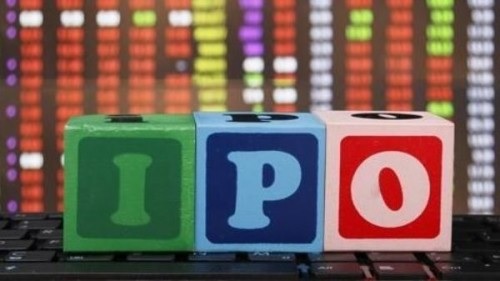Cottoncandy trading range for the day is 53770-54950 - Kedia Advisory

Follow us Now on Telegram ! Get daily 10 - 12 important updates on Business, Finance and Investment. Join our Telegram Channel
Gold
Gold prices rose by 0.59% yesterday to settle at ?76,034, driven by heightened geopolitical tensions between Russia and Ukraine. Reports of Ukraine’s missile strike and Russia’s nuclear doctrine updates spurred demand for safe-haven assets. However, comments from Russian Foreign Minister Lavrov and the US confirming no policy shifts tempered fears. Despite this, gold demand in India softened post-festive season due to price volatility, with dealers charging premiums of $3 an ounce, up from last week’s $1 premium to $5 discount. Conversely, Chinese dealers offered discounts of $15-$17 amid a lack of central bank purchases for the sixth consecutive month. Global gold demand remained steady year-on-year in Q3 at 1,176.5 metric tons, according to the World Gold Council. A 97% rise in opaque over-the-counter (OTC) flows contributed to a record total Q3 demand of 1,313 tons, offsetting a 12% decline in jewellery consumption. ETFs saw their first positive inflow quarter since Q1 2022, with 95 tons added. On the supply side, mine production hit a Q3 record with a 6% rise, while recycling increased by 11%. Technically, the market showed signs of short covering, with open interest dropping 4.61% to 8,438 contracts as prices gained ?447. Gold has immediate support at ?75,575, with further downside potential to ?75,115 if breached. On the upside, resistance is seen at ?76,335, and a break above could push prices toward ?76,635.
Trading Ideas:
* Gold trading range for the day is 75115-76635.
* Gold gains as markets reassessed tensions between Russia and Ukraine.
* Most investors still anticipate a 25bps Fed rate cut in December, the probability has dipped to 58% from 62%.
* The U.S. central bank is widely expected to deliver a third rate cut in December
Silver
Silver prices declined by 0.59% yesterday, settling at ?90,089 as easing tensions in the Russia-Ukraine conflict reduced safe-haven demand. The market's focus has shifted to upcoming remarks from Federal Reserve officials, which could influence the dollar and commodity prices. In China, the People’s Bank of China left key lending rates unchanged, providing no fresh signals for demand in the largest metals consumer. Meanwhile, India's silver imports surged to 4,554 metric tons in the first half of 2024, up from 560 tons a year ago, driven by rising industrial demand and investor interest in the metal's returns compared to gold. The Silver Institute projects the global silver deficit to decrease by 4% to 182 million ounces in 2024, with supply growth of 2% outpacing a 1% rise in demand. Industrial demand for silver, including usage in solar panels and electric vehicles, is set to hit record highs, despite a 16% decline in physical investment. Mine supply is expected to grow by 1%, led by higher output in Mexico, Chile, and the United States, while recycling is forecast to increase by 5% due to higher western silverware scrap. Exchange-traded products (ETPs) are on track for their first annual inflows in three years amid strong industrial demand and gold's rally. Technically, the market saw fresh selling with open interest increasing by 0.69% to 19,351 as prices fell by ?531. Silver finds support at ?89,340, with further downside possible to ?88,590. Resistance is seen at ?90,765, and a breakout could lead prices to ?91,440.
Trading Ideas:
* Silver trading range for the day is 88590-91440.
* Silver prices eased as concerns over the escalating Russia-Ukraine conflict began to subside.
* Investors remain hopeful that US President-elect Donald Trump's touted expansionary policies will boost inflation
* Fed’s Powell said that there’s no need to hurry into cutting interest rates
Crude oil
Crude oil prices slipped by 0.51% to close at ?5,828 as weak demand sentiment combined with rising U.S. crude inventories weighed on the market. U.S. crude oil inventories rose by 4.753 million barrels last week, far exceeding forecasts of a 0.8 million barrel increase, marking the fourth weekly build in twelve weeks, according to API data. Similarly, the EIA reported a 0.545 million barrel rise in crude inventories, alongside a 2.054 million barrel increase in gasoline stocks. However, crude inventories at the Cushing, Oklahoma delivery hub declined slightly by 0.140 million barrels, while distillate stockpiles fell marginally by 0.114 million barrels. On the supply side, Kazakhstan's Tengiz oil field reduced output by 28%-30% due to repairs, briefly tightening global supplies. Meanwhile, the International Energy Agency (IEA) warned of a potential 1 million barrels per day supply deficit in 2025, even if OPEC+ cuts persist. The IEA anticipates global oil demand to grow by 990,000 barrels per day in 2025, reaching 104.3 million bpd, though this is 300,000 bpd below prior forecasts due to weakening economic activity in China and North America. U.S. oil production forecasts for 2024 and 2025 were also trimmed by the EIA, reflecting slower growth expectations. Technically, crude oil experienced fresh selling with a 2.59% increase in open interest to 11,990 as prices declined by ?30. Key support is now at ?5,793, with further downside possible to ?5,757. Resistance is likely at ?5,892, and a move above this level could test ?5,955.
Trading Ideas:
* Crudeoil trading range for the day is 5757-5955.
* Crude oil prices drifted lower on weak demand and data showing an increase in U.S. crude inventories.
* Kazakhstan's biggest oil field Tengiz, has reduced oil output by 28%-30% due to ongoing repairs
* US crude oil inventories jumped by 4.753 million barrels, after falling by 0.77 million barrels in the previous week - API
Natural gas
Natural gas prices climbed 5.02% to settle at ?268 as forecasts for colder weather from late November to early December boosted expectations for increased heating demand. Meteorologists project a shift from warmer-than-normal temperatures through November 27 to colder-than-normal conditions from November 28 to December 4, which is anticipated to elevate gas demand significantly. LSEG forecasts average gas demand in the Lower 48 U.S. states, including exports, to rise from 107.7 billion cubic feet per day (bcfd) this week to 115.4 bcfd next week. Supply concerns also supported prices, with gas output in the Lower 48 easing to 100.6 bcfd in November, down from 101.3 bcfd in October and significantly lower than the record 105.3 bcfd of December 2023. Reduced drilling activity due to low spot prices earlier this year has weighed on production, with the EIA projecting a decline in annual output to 103.3 bcfd in 2024, marking the first yearly drop since 2020. Meanwhile, gas flows to LNG export facilities increased to 13.4 bcfd in November, up from 13.1 bcfd in October, reflecting strong export demand. U.S. utilities added 42 billion cubic feet (bcf) of natural gas to storage last week, bringing total stocks to 3.974 trillion cubic feet, 228 bcf above the five-year average. Technically, the market saw short covering as open interest dropped by 26.93% to 9,809 while prices surged ?12.8. Support is now at ?260.8, with further downside to ?253.6. Resistance lies at ?273.8, and a break above could see prices testing ?279.6.
Trading Ideas:
* Naturalgas trading range for the day is 253.6-279.6.
* Natural gas edged up on forecasts for colder weather in late November that should boost heating demand.
* Average gas output in the Lower 48 U.S. states eased to 100.6 bcfd so far in November from 101.3 bcfd in October.
* There was currently about 7% more gas in storage than normal for this time of year.
Copper
Copper prices rose 0.79% to settle at ?817.8 as supply concerns emerged after Peru reported a 1.2% year-on-year decline in September copper output to 232,423 metric tons. The Peruvian government also cut its 2024 production forecast to 2.8 million tons from 3 million tons earlier this year. However, geopolitical concerns around Russia eased slightly, with assurances to avoid nuclear conflict calming investor nerves. In China, the People’s Bank left key lending rates unchanged, maintaining a neutral stance. Copper imports in October increased by 1.1% year-on-year to 506,000 metric tons, driven by seasonal demand and declining domestic inventories. Year-to-date imports rose 2.4% to 4.6 million tons. However, China's refined copper output for the first nine months climbed 5.4% year-on-year to 10.04 million tons, signaling steady domestic production. The global refined copper market showed a surplus of 54,000 metric tons in August, down from 73,000 metric tons in July. Year-to-date, the market surplus stood at 535,000 metric tons, significantly higher than the 75,000 metric tons surplus during the same period last year. Despite this, improving seasonal demand and reduced domestic stocks have boosted China's import appetite, reflected in Yangshan premiums peaking at $69 per ton in October before retreating to $48 per ton. Technically, the market saw short covering with a 13.3% drop in open interest to 5,213 as prices gained ?6.45. Copper finds support at ?813.7, with further downside to ?809.5, while resistance is at ?820.4, above which prices could test ?822.9.
Trading Ideas:
* Copper trading range for the day is 809.5-822.9.
* Copper climbed as Peru copper output edges down 1% in September
* In China, the People's Bank of China left key lending rates unchanged, in line with expectations
* Investors kept an eye on geopolitical developments following Russia’s decision to lower the threshold for a potential nuclear strike amid its escalating conflict.
Zinc
Zinc prices rose 0.29% to settle at ?279.2 as improved consumption and high spot premiums lent support. The seasonal winter stockpiling by smelters in northern China from October to December has heightened raw material demand. However, mismatched supply and demand dynamics were evident, as October's imported zinc concentrate fell by 18.17% month-on-month and 23.85% year-on-year to 331,000 metric tons. Year-to-date imports totaled 3.1839 million metric tons, down 19.74% from the previous year. Global zinc market dynamics also played a role, with the deficit widening to 66,300 metric tons in August from 51,000 metric tons in July. Over the first eight months of 2024, the global zinc market recorded a surplus of 127,000 metric tons, significantly lower than the 418,000 metric tons surplus in the same period last year. China's October industrial output rose 5.3% annually, falling short of expectations, reflecting uncertainty around the effectiveness of monetary and fiscal measures. Meanwhile, China's September refined zinc production increased over 2% month-on-month but was down more than 8% year-on-year. Post-maintenance recovery in smelters across Inner Mongolia, Shaanxi, and Hunan supported output, with marginal production growth expected in October despite routine maintenance in Gansu. Technically, the market saw short covering with an 8.69% drop in open interest to 2,080. Zinc finds support at ?278.3, with further downside to ?277.3, while resistance is at ?280.7, above which prices may test ?282.1.
Trading Ideas:
* Zinc trading range for the day is 277.3-282.1.
* Zinc rose as consumption slightly improved, and spot premiums remained high, offering support.
* October zinc concentrate imports fell more than expected, with major reductions from Australia and Peru
* Affected by the winter shutdown, many smelters in northern China need to stockpile 1-2 months of zinc ore raw materials
Aluminium
Aluminium prices gained 0.27% to close at ?244.25, supported by constrained supply from major producers and export-related changes in China. China announced plans to end tax rebates on semi-manufactured aluminium exports from December, potentially removing five million tonnes from the global market. Meanwhile, bauxite prices surged to near-record highs as Guinea halted exports by Emirates Global Aluminium. Reduced bauxite output from Australia and Jamaica further pressured supply, with Chinese smelters facing their lowest ore inventory since 2015. Global primary aluminium output in October rose 1.3% year-on-year to 6.221 million tonnes, according to the International Aluminium Institute. In China, aluminium production in October totaled 3.72 million tonnes, up 1.6% from the previous year, while output for the first ten months reached 36.39 million tonnes, up 4.3%. Higher aluminium prices and improved demand enabled Chinese smelters to ramp up operations despite rising raw material costs. Key producing regions, including Shandong and Xinjiang, maintained strong operating rates, with some new capacity added in southwestern China. Exports of unwrought aluminium and related products from China surged 17% year-on-year to 5.5 million tonnes for the first ten months of 2024. October exports alone climbed 31% year-on-year to 577,000 tonnes, reflecting robust global demand. Technically, the aluminium market witnessed short covering with a 3% drop in open interest to 2,262. Aluminium finds support at ?242.3, with further downside to ?240.3, while resistance is at ?246.9, above which prices could test ?249.5.
Trading Ideas:
* Aluminium trading range for the day is 240.3-249.5.
* Aluminum rose amid lower supply from major producers
* China announced it will end tax rebates on exports of semi-manufactured aluminum products in December
* Global aluminium output rises 1.3% year on year in October – IAI
Cottoncandy
Cottoncandy prices rose by 0.2% to settle at ?54,480, supported by concerns over lower production in India. The USDA has revised India’s cotton production forecast for 2024/25 down by 7.4% to 30.72 million bales due to excessive rainfall and pest issues. Acreage under cotton cultivation fell by 9% to 11.29 million hectares, with farmers in Gujarat opting for groundnuts, which offered better returns. This reduction in production is expected to drive India’s cotton imports up to 2.5 million bales, compared to 1.75 million bales last year, while exports may decline to 1.8 million bales from 2.85 million bales. Globally, the USDA raised cotton production estimates by 200,000 bales, with gains in China, Brazil, and Argentina offsetting declines in the U.S. and Spain. U.S. cotton production is forecasted at 14.2 million bales, down over 300,000 bales due to Hurricane Helene, while exports are reduced to 11.5 million bales due to weaker global demand. World ending stocks are projected at 76.3 million bales, slightly reduced from the previous month. In Rajkot, a key spot market, prices declined by 0.41% to ?25,814.95. Technically, the market is witnessing short covering with open interest dropping by 11.39% to settle at 140 contracts. Cottoncandy prices are finding support at ?54,120, with a potential dip to ?53,770. On the upside, resistance is seen at ?54,710, and a move above this level could lead to prices testing ?54,950.
Trading Ideas:
* Cottoncandy trading range for the day is 53770-54950.
* Cotton gains as India's cotton production in 2024/25 is likely to fall by 7.4% from a year ago to 30.2 million bales.
* Cotton production is projected to increase in China, Brazil, and Argentina, more than offsetting reductions in the US and Spain – USDA
* USDA has lowered India's cotton production forecast for the 2024-25 season to 30.72 million bales
* In Rajkot, a major spot market, the price ended at 25814.95 Rupees dropped by -0.41 percent.
Turmeric
Turmeric prices surged by 3.03%, settling at ?14,336, as traders covered short positions. This recovery followed a period of weakness caused by subdued demand and higher arrivals in major markets. The expected 30-35% increase in acreage for the upcoming season suggests a potential production boost, exerting downward pressure on prices. However, this is countered by reports of crop damage due to excessive rainfall, which may limit the downside as losses could exceed earlier estimates. Favorable weather in key growing regions like Telangana and Vidarbha is currently supporting crop growth, but heavy rains earlier in the season may still impact yields. Market supply remains a critical factor. With sowing areas significantly higher in Maharashtra, Telangana, and Andhra Pradesh, the total cultivated area is expected to rise from last year's 3-3.25 lakh hectares to 3.75-4 lakh hectares. Despite the anticipated production of 70-75 lakh bags in 2025, an absence of carryover stocks could lead to a supply deficit. Exports rose marginally by 0.96% during April-September 2024 compared to the same period last year, while imports increased sharply by 184.73%, signaling mixed market dynamics. Technically, the turmeric market saw a 5.7% drop in open interest, indicating short covering. Prices are supported at ?14,006, with further downside potentially testing ?13,678. On the upside, resistance is pegged at ?14,566, and a move above this could drive prices to ?14,798.
Trading Ideas:
* Turmeric trading range for the day is 13678-14798.
* Turmeric gains on short covering after prices dropped due to lower demand amid a rise in arrivals.
* The expected acreage for the upcoming season is estimated to be 30-35% higher than last year.
* Recent weather conditions, which include dry weather followed by light rains, are benefiting crop growth.
* In Nizamabad, a major spot market, the price ended at 13802.55 Rupees gained by 1.12 percent.
Jeera
Jeera prices rose by 1.52% to close at ?25,385, supported by short covering after recent declines driven by higher arrivals. Approximately 15,000 bags of cumin are arriving daily in Unjha, contributing to supply pressure. Farmers still hold around 35% of the current season's stock, while carryover stock at the beginning of the next season is estimated at 20 lakh bags. However, export prospects look promising, with expectations of increased demand post-Diwali, particularly during November-December. Production challenges may also support prices, as cumin production is projected to decrease by 10%, with cultivation in Rajasthan down by 10-15%. India remains the most attractive global supplier of cumin due to its competitive pricing at $3,050 per tonne, significantly cheaper than Chinese cumin, which is priced $200-250 higher. This pricing advantage, coupled with geopolitical tensions in the Middle East, has driven robust export growth. Data from the Federation of Indian Spice Stakeholders (FISS) shows cumin seed exports during July-September at 52,022 metric tonnes, up 128% year-on-year. Overall exports from April to September surged by 70.02% to 119,249.51 tonnes compared to the same period last year. Technically, the market saw fresh buying, with open interest increasing by 2.12% to 2,169 contracts. Jeera finds support at ?25,150, with further downside potentially testing ?24,900. Resistance is likely at ?25,570, and a breakout above this level could lead to prices testing ?25,740.
Trading Ideas:
* Jeera trading range for the day is 24900-25740.
* Jeera gains on short covering after prices dropped as arrival has increased.
* There is a possibility of 25 percent reduction in cumin sowing in Gujarat
* Carryover stock of 20 lakh bags of cumin is estimated in the new season
* In Unjha, a major spot market, the price ended at 25267.95 Rupees gained by 0.17 percent.
Views express by all participants are for information & academic purpose only. Kindly read disclaimer before referring below views










Tag News

Quote on Gold by Pranav Mer, Vice President, EBG - Commodity & Currency Research, JM Financi...
More News

Agri Commodity Technical Report 12 December 2024 - Geojit Financial Services Ltd





 320-x-100_uti_gold.jpg" alt="Advertisement">
320-x-100_uti_gold.jpg" alt="Advertisement">





